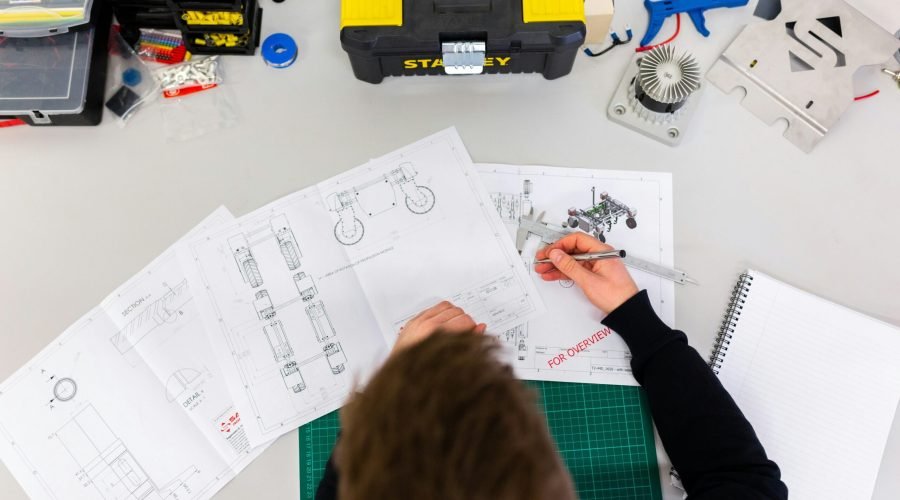Understanding Artificial Intelligence in Smart Homes
Artificial Intelligence (AI) encompasses a wide range of technologies and methodologies designed to simulate human intelligence through the use of complex algorithms and data processing. In the realm of smart homes, AI fundamentally transforms the way we interact with our living environments, offering seamless automation and enhanced user experiences. At its core, AI in smart homes employs machine learning, which allows devices to analyze vast amounts of data, learn from it, and make informed decisions without requiring explicit programming for each task.
One of the primary ways that AI enhances smart home technology is through enabling devices to adapt and respond to user preferences over time. For example, smart thermostats utilize AI algorithms to analyze temperature patterns and occupancy data, proactively adjusting heating and cooling systems to optimize comfort and energy efficiency. This adaptable functionality not only enhances user satisfaction but also contributes to cost savings and sustainability by minimizing energy waste.
Voice assistants are another notable application of AI in smart homes. These intuitive systems utilize natural language processing (NLP) to understand and respond to spoken commands, making interaction with household devices more intuitive. By integrating with a range of smart devices, voice assistants can control lighting, security systems, and appliances, all while learning from user interactions to improve their responsiveness and accuracy over time.
Furthermore, AI-powered security systems exemplify how advanced technology enhances safety and peace of mind. These systems can analyze video feeds in real time to detect unusual behavior, alerting homeowners to potential threats and even differentiating between familiar faces and strangers. This proactive approach to home security illustrates the profound impact of AI in making our homes not only smarter but also safer.
Overall, the integration of artificial intelligence into smart home technology marks a significant advancement, allowing homes to become not just automated spaces but environments that can learn, adapt, and evolve according to the needs and preferences of their inhabitants.
The Role of Automation in Smart Home Systems
Automation plays a critical role in the evolution of smart home systems, allowing technology to operate independently and take on a variety of tasks without requiring human interaction. This advancement signifies a shift towards greater efficiency, ease of use, and enhanced safety in our living environments. The implementation of automated systems in homes facilitates energy conservation, convenience, and a heightened level of security, fundamentally transforming how individuals interact with their living spaces.
One of the notable benefits of automation is energy efficiency. Automated lighting systems can adjust based on occupancy or natural light levels, thereby reducing unnecessary energy consumption. Homeowners can schedule heating and cooling systems to operate only when needed, optimizing energy expenditure and contributing to lower utility bills. Through these enhancements, automated systems not only support sustainable living practices but also provide cost-effective solutions for homeowners.
Convenience is another key advantage of smart home automation. Automated tasks—such as turning off lights, locking doors, or adjusting the thermostat—can be controlled through smartphone applications or voice-activated assistants. This level of control allows individuals to perform multiple functions from virtually anywhere, making daily routines smoother and more efficient. For families, this means managing household activities can be streamlined, enabling more time for personal interests and family bonding.
Moreover, the integration of smart security systems enhances overall safety. Automated alerts can notify homeowners of unusual activity, while smart locks facilitate secure entry without traditional keys. This technology provides peace of mind, particularly when owners are away from home. As automation continues to advance, its applications not only simplify everyday tasks but also foster a more connected, responsive living environment. The implications of automation in smart homes signify a substantial improvement in the quality of life.
Prompt Engineering: Bridging User Intent and AI Response
Prompt engineering is a crucial discipline in the realm of artificial intelligence, particularly when it pertains to optimizing interactions between users and AI systems within smart homes. It involves meticulously crafting inputs, or prompts, that effectively convey user intent to ensure that AI can produce accurate and relevant outputs. By understanding the nuances of language and context, prompt engineering serves as the bridge that connects human needs with the capabilities of AI-driven technologies.
The significance of prompt engineering lies in its ability to enhance the communication between users and smart home devices. For instance, when a user commands their virtual assistant to “turn on the lights,” a poorly phrased prompt may lead to misunderstandings or inadequate responses. Conversely, a well-engineered prompt—such as “please turn on the living room lights to 75% brightness”—provides the AI with clear instructions, allowing it to fulfill the user’s request more effectively. This tailored approach not only increases the accuracy of the AI response but also augments user satisfaction.
Moreover, examples abound that illustrate the power of thoughtful prompts. In home automation systems, users may engage their AI by asking for specific actions, like adjusting the thermostat based on the weather. A prompt crafted to include context, such as “Set the temperature to 72 degrees if it’s over 80 degrees outside,” helps the AI better understand the user’s requirements while optimizing the system’s functionality. The emphasis on context ensures that smart home devices operate seamlessly, creating a more intuitive living experience.
Ultimately, prompt engineering is an essential element in optimizing user interactions with artificial intelligence in smart homes. By investing time and effort into crafting effective prompts, users can unlock the full potential of their smart devices, leading to enhanced performance and greater overall satisfaction.
Future Trends in AI and Smart Home Integration
The integration of artificial intelligence (AI) within smart homes is evolving rapidly, highlighting a future where convenience and efficiency reign supreme. As advancements in AI algorithms continue to develop, the capabilities of smart home devices are likely to become increasingly sophisticated. This evolution will manifest through the creation of more intuitive systems that can learn and adapt to the unique behaviors of the household. Such improvements are aimed at enhancing user interaction by making devices more responsive and capable of preemptively addressing the needs of residents.
Moreover, as smart devices become more user-friendly, households can expect an expanded array of options for automation. Voice-activated assistants are expected to reach a level of personalization that was previously unattainable, enabling them to understand context and nuances in user preferences. Features such as predictive analytics will allow smart devices to anticipate energy consumption, thereby optimizing efficiency and minimizing costs, which is crucial as sustainability becomes a fundamental concern for consumers.
However, the increasing reliance on AI in smart homes does bring forth significant implications for privacy and data security. With devices collecting vast amounts of personal data, manufacturers and consumers alike must navigate the balance between convenience and caution. Emerging trends suggest that future devices will incorporate advanced encryption methods and strict data governance policies to ensure user information remains secure. Additionally, transparency in data usage is likely to be a growing expectation from consumers, pushing manufacturers to prioritize ethical standards in their AI strategies.
In conclusion, the interplay between automation and artificial intelligence is poised to reshape the landscape of smart homes. By aiming for more intuitive designs and prioritizing user experience, while also addressing privacy concerns, the future of smart home integration promises a more connected and sustainable living experience.

